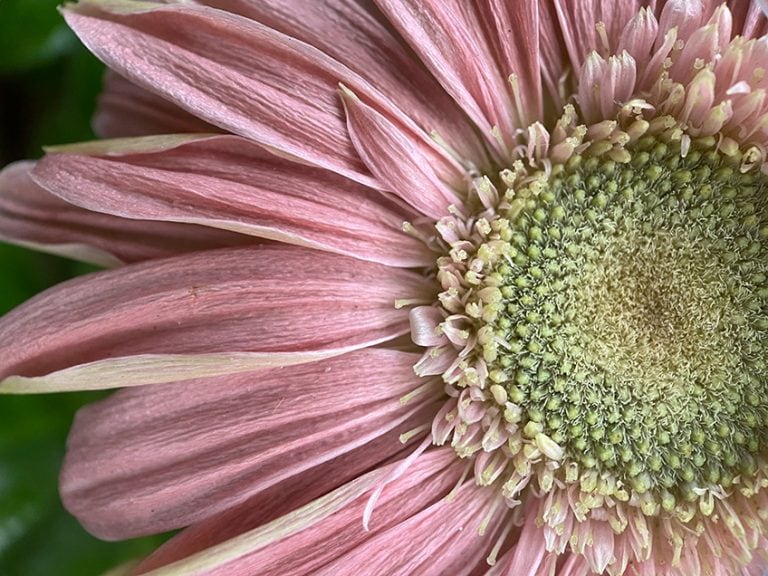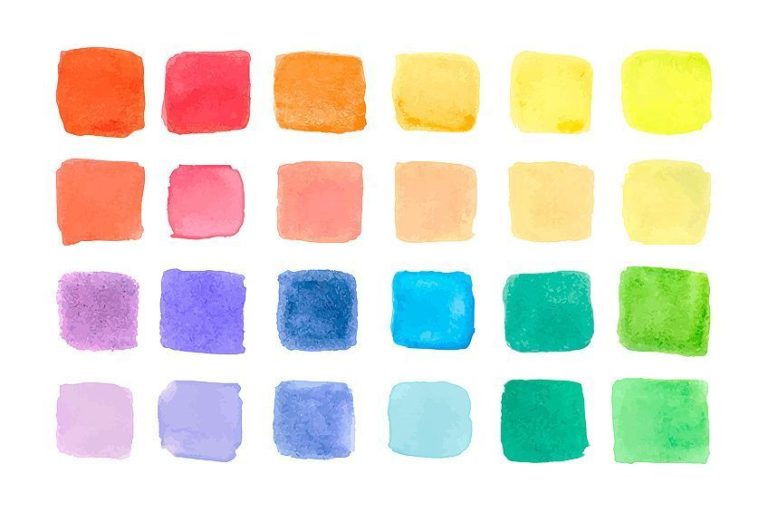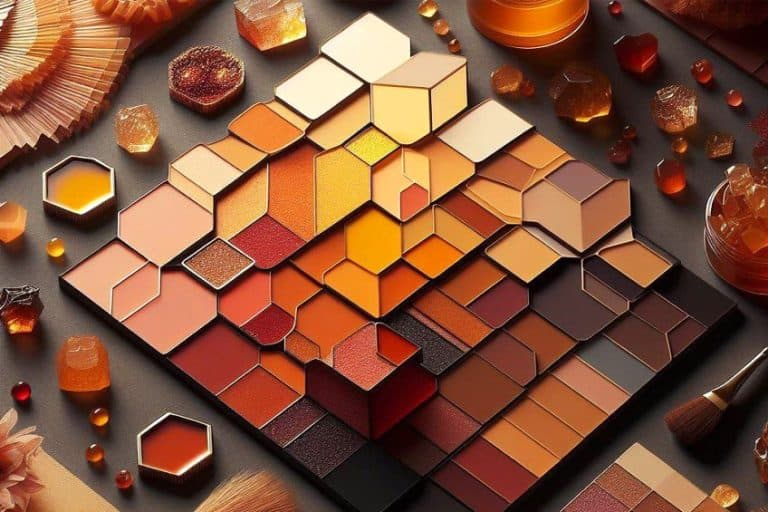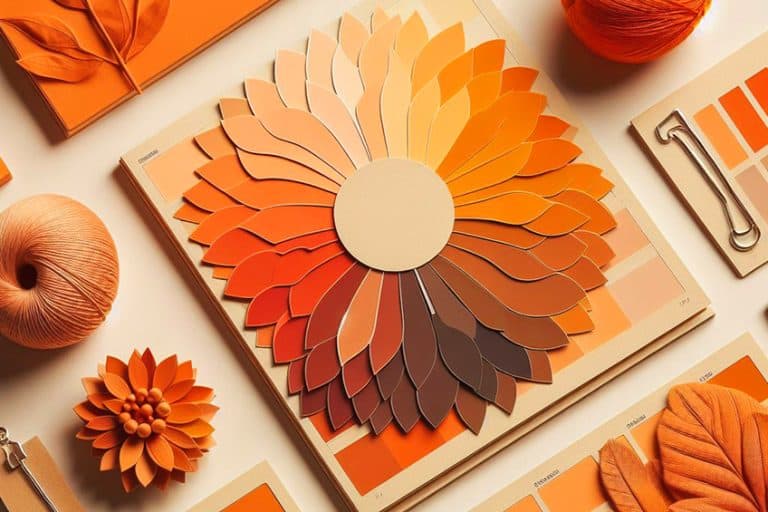Color Psychology – Using Colors to Influence Emotions
In some action movies, you might have heard the words, “Do not push the red button!”. Everyone takes for granted that the red button is dangerous, but why? The button can just as easily be blue, but deep down, we all know that it is not the same. Artists, designers, and advertisers have been using color psychology to influence our emotions for years, so how do they do it? In this article, we will be discussing the psychology of color, and looking at its effects and various applications. Of course, we will also find out why the button is red, but first, let us jump into the basic definition of color psychology!
What Is Color Psychology?
Psychology of color is also defined as the study of color and how it affects our moods and behavior. Colors have even been proven to influence us on a physical level, from increasing or decreasing blood pressure to helping increase metabolism. Colors are also a way of non-verbal communication and can influence the decisions we make. You can divide colors into two main categories, which you can also clearly recognize if you look at a color wheel.
On one side, you have red, orange, and yellow, which are known as warm colors and generally produce feelings of warmth and energy. On the other side, you have the blues, greens, and purple colors, which are colors that produce calmer feelings and are considered cool colors.
Colors not only evoke positive emotions or associations, but they can also produce negative reactions. For example, blue is calming, but it can also seem cold or indifferent. Red can be seen as warm, but it can become something more aggressive and hostile. There are a few principles of how color psychology works. First, is the obvious one, that colors all have a specific meaning. However, the meaning of a color can be instinctive, where feelings or responses are produced by simply being exposed to a color. For example, a physiological response, such as an increased heart rate.
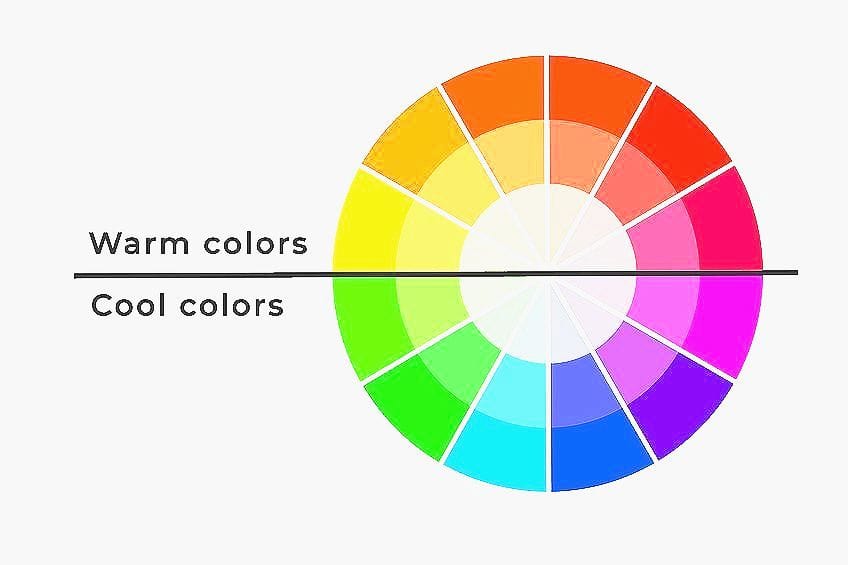
Color meanings are also learned, which could be guided by many things like individual experiences and cultural influences. The color meaning and its effect is also reliant on context, or how colors are affected by other surrounding colors. Another principle is when a person sees a color, the influence or assessment of the color is automatic. This assessment process then produces a certain behavior or feeling.
These are the basic principles that have been seen over the years, and much more research is needed to understand the full impact of colors and their meanings.
Color Psychology: A Brief History
Color psychology is relatively new, however, there has been an interest in color and its effects since ancient times. Ancient Egyptians and other ancient cultures are believed to have used colors in their treatments for the sick, and colors have always played a role in various spiritual practices. It was in Ancient Greece that color theory was first introduced by Aristotle, which was then improved upon later by Leonardo da Vinci. Sir Isaac Newton was the first scientist, who uncovered the visible colors in the spectrum by experimenting with prisms in 1665. This led to further experiments and the discovery that light can be combined to form more colors.
Later, a German poet by the name of Johann Wolfgang von Goethe wrote the book, Theory of Colors (1810), which explored the impact colors have on emotions.
A German neurologist, by the name of Kurt Goldstein further studied and conducted experiments in 1942, to find out how colors influenced motor function. Unfortunately, he could not scientifically prove his theories, but his work did encourage further study into the subject. In the 20th century, Carl Jung, a well-known Swiss Psychiatrist did further studies into color psychology. The various color properties and meanings appealed to him, as these could be used as tools for psychotherapy.

Since color plays such a significant role in our lives, you would think that color psychology has been researched quite thoroughly. However, there has been very little scientific research done on the matter, and much of it is purely anecdotal. Even though there is a general lack of research, we have still learned quite a bit about colors and their meanings. Today, the more popular areas where color psychology is used include art, design, branding, and marketing.
Importance of Color in Psychology
Many colors have a universal meaning, however, not all colors are seen the same way and can be influenced by many factors including cultural, social, and psychological factors as well as biological and physiological factors. Today, the psychology of color is even more important because of the exposure to the internet, the advertising industry, and social media.
Movies even use the principles of color psychology to influence their audience.
How Color Influences Individuals
Even though some colors may have a universal meaning, it does not mean that everybody views them the same way. The perception of color can be affected by many things including your age, gender, and culture. How a color makes you feel can be deeply personal because of an experience you had. These color associations can affect how you feel about a color no matter what the general color meaning is. For example, maybe you wore your favorite color to school, but the other kids made fun of you. As an adult, that color will always remind you of this time and will become your least favorite color.
Color associations can also have cultural influences. For example, in many Western countries, white is seen as the color of purity and black is a color of mourning. However, white is a symbol of mourning in many Eastern Cultures.
Some color associations are because of social influences. For example, pink used to be a color that boys wore, but because of influencers like manufacturers and fashion trends, blue became a boy’s color, while the more “delicate” pink became a girl’s color. Today, fashion trends are even more prolific, every year there is now a “color of the year”, which predicts what fashion and design trends will be.

Color preferences can also be associated with ambient temperature. People who live in warmer areas tend to choose cooler colors, such as blue or green. On the other hand, people who live in colder regions tend to pick warmer colors like red, orange, and yellow. Personality types can also play a role in color preference. It is not true for everyone, but in general, introverts have been found to prefer cooler colors, while extroverts prefer warmer colors.
Color Context
There are two slightly different meanings when it comes to color context. If we are dealing with color theory, color context involves how you see each color when they are placed side-by-side. This is also known as simultaneous contrast. For example, placing darker colors next to lighter colors, and the darker colors will appear darker, while the lighter colors appear even lighter, but no change has been made to each color.
This is how complementary colors work, by increasing the appearance of each other’s color saturation, creating color contrast. This can also be used in color psychology because it affects our perception of color.
If we are dealing directly with color psychology, color context is a matter of color perception. This involves the changing influences of color when the context in which the color is found changes. So, a color can have various meanings in different contexts or backgrounds. For example, yellow means to slow down or be cautious when seen at a traffic light or painted on school buses. However, certain advertising companies may use yellow as a sign of happiness or celebration.

In the end, color perception is somewhat subjective and dependent on a person’s personal experiences, cultural influences, and personal preferences, which makes it extremely difficult to interpret them as specific feelings. However, some effects have a general meaning. Next, we will be looking at these various color associations.
The Psychological Effects of Different Colors
We have already mentioned the warm and cool colors, which evoke feelings of comfort and warmth. Some warm color blends can also have yellow undertones, for example, red-orange. However, you can also get red colors that have a blue undertone, making them cool reds. For example, burgundy. These colors can provide a sense of calm but also have a sense of comfort. So, when deciding on a color and finding the emotional meaning of colors, you should also take this into account. Let us now take a look at the various general color associations of your basic colors including red, orange, yellow, blue, green, purple, black, and white.
Red
Red is a strong color that has warmth and energy. Red is also a confident and exciting color that takes action. The color red is a physical stimulant that stimulates the neurons and adrenal glands. So, it is the perfect color to wear when exercising, as it is invigorating and motivating. Many food companies also include red in their logos, as it helps to stimulate the appetite. The color red is also commonly associated with love, passion, and romance. As an example of social influence and learning color associations, red can be seen as one of the main colors for Valentine’s Day.
If used in another context, red is associated with danger, and here we refer back to the red button. The red indicates caution and danger, which is why we have red stop signs or red fire engines.
Red can also be seen as the color for sacrifice or violence because of its association with the color of blood. Red is also often associated with anger and aggressiveness, which can be seen in statements like “seeing red”. Another negative association is that red can represent failure, for example, if you are dealing with exam tests and you get your paper back, it is filled with correction marks of red ink.

| Shade | Hex Code | CMYK Color Code (%) | RGB Color Code | Color |
| Red | #ff0000 | 0, 100, 100, 0 | 255, 0, 0 |
So, you can see that there are quite a few positive as well as negative color associations when dealing with red. Many of these color associations are directly linked to color context. Again, do not forget about cultural influences. Red is a symbol of happiness and luck in countries like China, which is also the color of their Chinese New Year. In other Eastern European countries, where communism was rampant, the color red has negative associations. There are also many shades of red, which can have a different emotional meaning.
Pink is a softer version of red, which makes it more reserved and calming, but still playful and is still linked to emotions like love. Due to social influences, pink has also become associated with feminism.
Orange
Orange is another warm, stimulating, and energetic color that evokes feelings of joy, happiness, kindness, and enthusiasm. It is a vibrant, optimistic, and uplifting color that provides a sense of positivity and confidence. Spontaneous and creative, orange is said to be the color that encourages communication.
Physically, orange has been shown to help improve energy levels and increase oxygen supply to the brain. It is also said to help stimulate the appetite and the thyroid gland, which helps boost metabolism.
Like red, orange is also seen as a color for caution, as seen on certain dangerous machinery or signs. Another example is orange hunting jackets, which caution others not to shoot. Negatively, orange can become a bit overwhelming and dominating. Orange can also become irritating and evoke a sense of impatience. It can also seem immature, frivolous, and superficial.

| Shade | Hex Code | CMYK Color Code (%) | RGB Color Code | Color |
| Orange | #ffa500 | 0, 35, 100, 0 | 255, 165, 0 |
The color orange is also a sign of autumn and the seasons changing. In some Middle Eastern cultures, orange is a color of mourning. In India, orange is seen as a sacred color, where Hindu, as well as Buddhist monks, can be seen wearing their distinctive orange robes. Again, do not forget the different shades of orange.
Brighter and more vibrant shades are attention-grabbing, while softer shades provide a more comforting and calming feel.
Yellow
Yellow is seen as a spontaneous color that evokes feelings of joy, hope, optimism, positivity, and happiness. As with the previous colors, yellow is also warm, playful, and energizing. Yellow also inspires creativity, confidence, and friendliness, and can symbolize intellect. Yellow can help to stimulate the logical part of the brain, making learning easier. Since yellow is stimulating, it has been shown to increase metabolism.
Yellow is also used as a sign of caution but is usually paired with black to make it stand out.
When using too much yellow, it can create a sense of fear, anxiety, or agitation. Yellow can also represent cowardice and can be associated with criticism, deceitfulness, and judgment. In general, yellow is the color of sunshine, flowers, and new life. However, in other countries like Africa, yellow also symbolizes wealth.

| Shade | Hex Code | CMYK Color Code (%) | RGB Color Code | Color |
| Yellow | #ffff00 | 0, 0, 100, 0 | 255, 255, 0 |
There are a few different meanings when it comes to Eastern cultures including being seen as a color for good luck, prosperity, and bravery. In France and Germany, yellow is associated with envy. So, when some say, “green with envy”, most Germans will say “yellow with envy”.
Green
Green is a relaxing, yet revitalizing color that is closely associated with health, balance, and harmony. Green also represents nature, growth, and fertility, and provides a sense of safety. The refreshing green color also provides hope and an expectation of new beginnings and prosperity.
Walking in a green forest helps to slow down the heart rate and creates a sense of peacefulness. In business, green is often used by those dealing with health, wellness, and environmentally friendly products.
Negatively, green can be associated with envy, greed, and materialism. Green can also be seen as stagnant, and boring, and can also be associated with sickness. Different shades of green can also produce varying effects. Darker greens relate more to prestige, wealth, and money, while lighter greens offer freshness and relate more to growth.

| Shade | Hex Code | CMYK Color Code (%) | RGB Color Code | Color |
| Green | #008000 | 100, 0, 100, 50 | 0, 128, 0 |
Green is also associated with luck in some countries, for example, the green four-leafed clover. In China, green is seen negatively as a sign of infidelity. In Central and South American countries, green can be seen as patriotic, or in other areas, green is a symbol of death.
Blue
Next, we are going to begin with cool colors, blue being at the top of the list. Blue is said to be one of the more popular colors and is often seen as a color of intelligence, wisdom, authority, dependability, and trust. This is why many companies use blue to build customer loyalty. Mentally, blue is a soothing, peaceful, and calming color. Blue can create the feeling of open spaces, consider the sky and ocean.
Some of the top brands, such as Ford, IBM, Visa, and American Express all use blue in their logos.
It is also associated with honesty, commitment, loyalty, and integrity. Since blue is calming, it can also help to improve focus and concentration, and can help to slow your heart rate. Blue can help to reduce fear and tension, and it is a color that can also help to reduce appetite. On the downside, blue can also seem cold, unemotional, predictable, and reserved or conservative. Blue is also often associated with depression, as the references to “feeling blue” indicate.

| Shade | Hex Code | CMYK Color Code (%) | RGB Color Code | Color |
| Blue | #0000ff | 100, 100, 0, 0 | 0, 0, 255 |
Too much blue can become boring and produce a more severe outlook. Think of different shades of blue to add more interest. In Central and South America, blue is mostly associated with mourning. In some Eastern countries, it is associated with spirituality, because in Hinduism, the deity Krishna has blue skin. Blue represents healing and immortality in other Asian cultures.
Purple
The color purple is mysterious and is often associated with spirituality. However, purple is also strongly associated with royalty, luxury, glamor, and quality. This is because, in the past, only the rich and royalty could afford the dye that created purple clothing. Purple is also a color that uplifts and inspires creativity and imagination. Purple or violet encourages you to be more introspective and consider deeper thoughts. It promotes more insightful and intuitive observations.
Negatively, purple can seem immature, emotional, and overly sensitive. Purple can also imply inferiority, moodiness, and oppression and can appear arrogant.
As a color associated with luxury, purple can also be seen as being excessive and overindulgent. In African countries, purple remains the color of wealth and royalty, while in the Middle East, it also represents wealth. However, in South America and Thailand, purple is seen as a color of mourning and implies death.

| Shade | Hex Code | CMYK Color Code (%) | RGB Color Code | Color |
| Purple | #800080 | 0, 100, 0, 50 | 128, 0, 128 |
Black
Technically, black is not a color and is the absorption of all the colors in the light spectrum, but it still has meaning and associations. While hues like red and blue are known as chromatic colors, black is referred to as an achromatic color. Black has mysterious aspects but is also associated with power and protection. However, black also has a certain elegance and sophistication. Black is an authoritative and formal color that helps to produce a sense of safety and security. It is also often the color used in high society, where black tuxedos produce a sense of sophistication.
However, even though it can produce elegance, it can also be serious, cold, heavy, menacing, and produces a sense of darkness and fear.
Black can also be depressing, domineering, and negative. In most Western cultures, black is a symbol of death, mourning, and evil. Black has a wide variety of meanings all over the world. In Japan and China, black is seen as a color of strength, youthfulness, and energy. In Japan, black is also associated with femininity and mystery. Some African cultures may see black as a sign of maturity and masculinity.
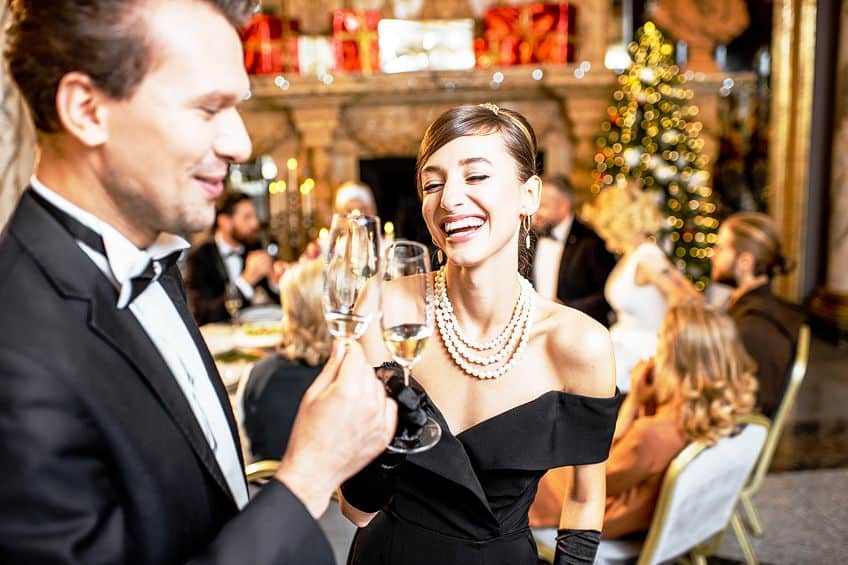
| Shade | Hex Code | CMYK Color Code (%) | RGB Color Code | Color |
| Black | #000000 | 0, 0, 0, 100 | 0, 0, 0 |
White
White is also not a color and is the opposite of black where all the colors of the spectrum come together to produce white light. White is also an achromatic hue. In general, white is seen as a color of purity, innocence, and peace. White also symbolizes hygiene, cleanliness, and perfection. White is also a sign of hope, simplicity, clarity, and openness. The color white promotes self-reflection and open-mindedness.
However, white can also appear sterile, cold, indifferent, and unfriendly.
White can also seem distant, boring, and empty. Since white is seen as a symbol of purity, in Western cultures, it is often the color for wedding dresses and baptismal gowns. Some African cultures associate white with prosperity and luck. In some Asian or Eastern European countries, white is also associated with death, and the color is seen as unlucky and denotes unhappiness.

| Shade | Hex Code | CMYK Color Code (%) | RGB Color Code | Color |
| White | #ffffff | 0, 0, 0, 0 | 255, 255, 255 |
Applications of Color Psychology
Now that we have touched on the emotional meaning of colors, let us now take a look at the various applications of color psychology. Today, in our modern world, we are exposed to a large amount of advertising and information. Color psychology is used to encourage you to make decisions about what to wear and what to buy. However, can colors help to improve productivity or can they help to heal the body? To find out, read further to discover how colors are used in various industries.
Marketing and Branding
Do you want to convey a sense of trust and authority, or maybe you are looking for something that conveys harmony and health? You can use colors to create the image you want to portray. As long as the color you choose is appropriate and works well with the color palette you have chosen.
Choosing the Proper Color for Your Logo
There are so many colors to choose from, it can be quite challenging to find a color or colors that fit your brand. Choosing the right colors can encourage an emotional connection in customers, so make sure to understand all the color meanings. Many of the more popular logo brands contain three elements:
- You need to choose a dominant base color, which will reflect the main message you wish to convey.
- Your second accent color should also represent aspects of your company and should work well with your base color.
- Consider a third neutral color to create a more harmonious color combination, for example, white, gray, or beige.
To create a balanced look, you need to understand color theory and learn the different available color combinations. Are you looking for a more monochromatic look or something that stands out more? Also, be aware that color temperature can also influence viewers. You can now begin connecting your brand personality with a suitable color palette.
Warmer colors are energizing and fun, while cooler colors and neutrals offer a more serious look.

Always make sure you do your research on colors, as we have learned, culture and other aspects play a role in the perception of color. Many of the colors are also better suited for different industries, and understanding this can help with your color choices. For example, red is often used in the food industry, such as KFC, McDonald’s, and Burger King all have red in their logos. This is because red is used to stimulate the appetite and attract attention.
How Colors Influence Consumer Behavior
Colors are used extensively as a marketing tool to help convey certain messages to the consumer. Colors can easily be used to encourage a customer to buy a product or service. You also need to choose carefully when deciding on your personal brand, as the colors play a part in representing what you offer.
We have mentioned that color temperature can play a role in how you perceive something. However, you should also consider the brightness and tone, which can make a difference in customer reactions. Warm, bright yellows and pinks can produce excitement. Muted, these colors still supply a sense of excitement but are calmer and provide more of a modern and contemporary look.
Interior Design
Your home is a place where you spend a lot of time, so choosing the right colors is important. Colors not only produce an aesthetic effect, but they also influence the atmosphere and our mood. You need to also consider what room you are looking at, is it a bedroom, where you want to relax? Is it a living space, where you entertain a lot? Besides a family home, this also applies to different interior design purposes. Are you creating a look for a restaurant or a high-end clothing store? Asking these questions can help you decide on the color and the mood you wish to set.
Blues and greens are calming, so are perfect for bedrooms and bathrooms, while warmer and energetic colors like red or orange are options for dining and living areas. Neutral colors are also perfect to include, as they are also generally calming, and can help to tone down a brighter more vibrant color palette.
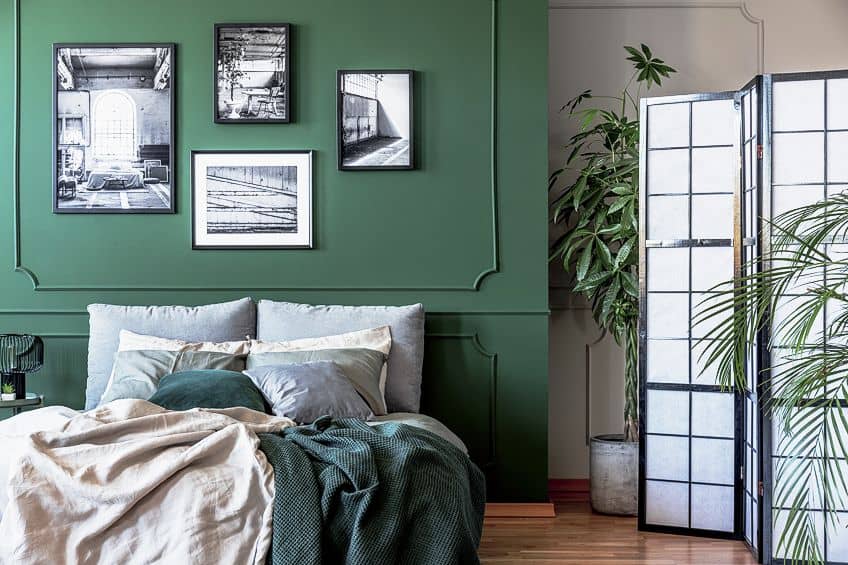
When choosing an interior design color palette, it means choosing different color combinations. To create a balanced look, it is best to use a base color and accent colors, or the 60,30,10 rule of interior design. Companies are also using color to create better work environments. To help with focus and improve productivity, blue and green are often chosen. Warmer colors help to improve mood and energy, as well as stimulate creativity.
Healthcare and Therapy
Since colors have such a profound effect on our minds and bodies, it is no wonder those in the healthcare industry take advantage of this. Hospitals and hospital staff commonly have calming and healing colors, such as softer shades of blue and green. Add white to increase the sense of cleanliness. However, depending on the field of healthcare, you might want to consider warmer pastel colors that can be encouraging, and uplifting.
Color Therapy
Color therapy, also known as chromotherapy, uses color to help heal the body and mind. Some Ancient cultures have also been known to use colors in this way, so it is not something new, but a lot more research needs to be done. This form of therapy is also known as colorology or color light therapy. Warm colors like red are used to help improve circulation and wound healing. Red is also used to stimulate and energize the mind.
Yellow can help to stimulate the nervous system, while orange helps to heal the lungs and improves energy levels.
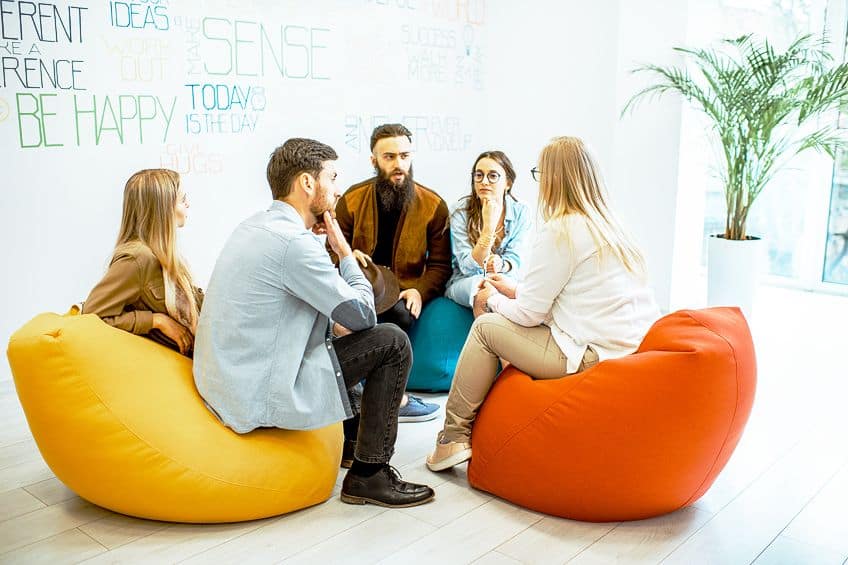
Cooler colors like blue are used to help soothe pain and calm the mind. Indigo is also said to help with skin issues. Colors can also be used in art as a way of therapy for those who cannot verbally communicate. Psychologists can see what colors patients use in art therapy, and from this, questions can be asked as to why the patient chose the colors, which could lead to certain emotional connections.
Education and Learning
Colors can also be used to create the perfect learning environment and can help students both on a psychological and physical level. Choosing the proper colors can help to improve memory, and focus, and can increase the attention of learners. It is best to create a balanced color palette, as too many bold colors can become too overstimulating.
When dealing with smaller children, they are often drawn to bright colors like yellow, green, pink, and blue. Lighter versions of these colors can be playful, and fun, and can produce a sense of happiness.

Colors like blue, green, and white have been proven to help increase curiosity and satisfaction and supply a calm learning environment. Warmer colors like orange and yellow are high energy and can create a more stimulating environment that motivates, improves attention, and stimulates active participation. So, an example of a color palette for a classroom can be blue and white as your dominating colors, while you can bring in smaller doses of yellow.
There have been many color experts who have proven how colors can influence our behavior and how we feel. However, how colors affect the mind is subjective because of factors like cultural and personal influences, among other things. So, there is still a lot more research that needs to be done to gain a better understanding of color psychology and how we can use it to our advantage.
Frequently Asked Questions
What Is Color Psychology?
Color psychology can be defined as the study of colors and how each color affects the mind and emotions. Colors have various qualities that can influence emotions, which are reliant on different factors like age, gender, personal experiences, and culture.
What Are Energizing Colors?
All the warm colors, such as red, orange, or yellow are the hues you can choose for the most energizing colors. Out of these, experts say that red is the most stimulating.
What Are Calming Colors?
The calming colors are mostly on the cool side of the color wheel and include blues, greens, and purples. However, most muted colors or pastel colors, including pink, yellow, or orange, can also provide a certain level of calmness.
How Can You Use Color Psychology?
There are many areas where you can use color psychology. Businesses can use color to influence purchasing decisions, color can be used to help create a more productive work or learning environment, or it can create a home space that is welcoming and relaxing. Colors can also be used to help heal the body, among many other uses.
In 2005, Charlene completed her Wellness Diplomas in Therapeutic Aromatherapy and Reflexology from the International School of Reflexology and Meridian Therapy. She worked for a company offering corporate wellness programs for a couple of years, before opening up her own therapy practice. It was in 2015 that a friend, who was a digital marketer, asked her to join her company as a content creator, and this is where she found her excitement for writing.
Since joining the content writing world, she has gained a lot of experience over the years writing on a diverse selection of topics, from beauty, health, wellness, travel, and more. Due to various circumstances, she had to close her therapy practice and is now a full-time freelance writer. Being a creative person, she could not pass up the opportunity to contribute to the Art in Context team, where is was in her element, writing about a variety of art and craft topics. Contributing articles for over three years now, her knowledge in this area has grown, and she has gotten to explore her creativity and improve her research and writing skills.
Charlene Lewis has been working for artincontext.org since the relaunch in 2020. She is an experienced writer and mainly focuses on the topics of color theory, painting and drawing.
Learn more about Charlene Lewis and the Art in Context Team.
Cite this Article
Charlene, Lewis, “Color Psychology – Using Colors to Influence Emotions.” Art in Context. September 18, 2023. URL: https://artincontext.org/color-psychology/
Lewis, C. (2023, 18 September). Color Psychology – Using Colors to Influence Emotions. Art in Context. https://artincontext.org/color-psychology/
Lewis, Charlene. “Color Psychology – Using Colors to Influence Emotions.” Art in Context, September 18, 2023. https://artincontext.org/color-psychology/.





